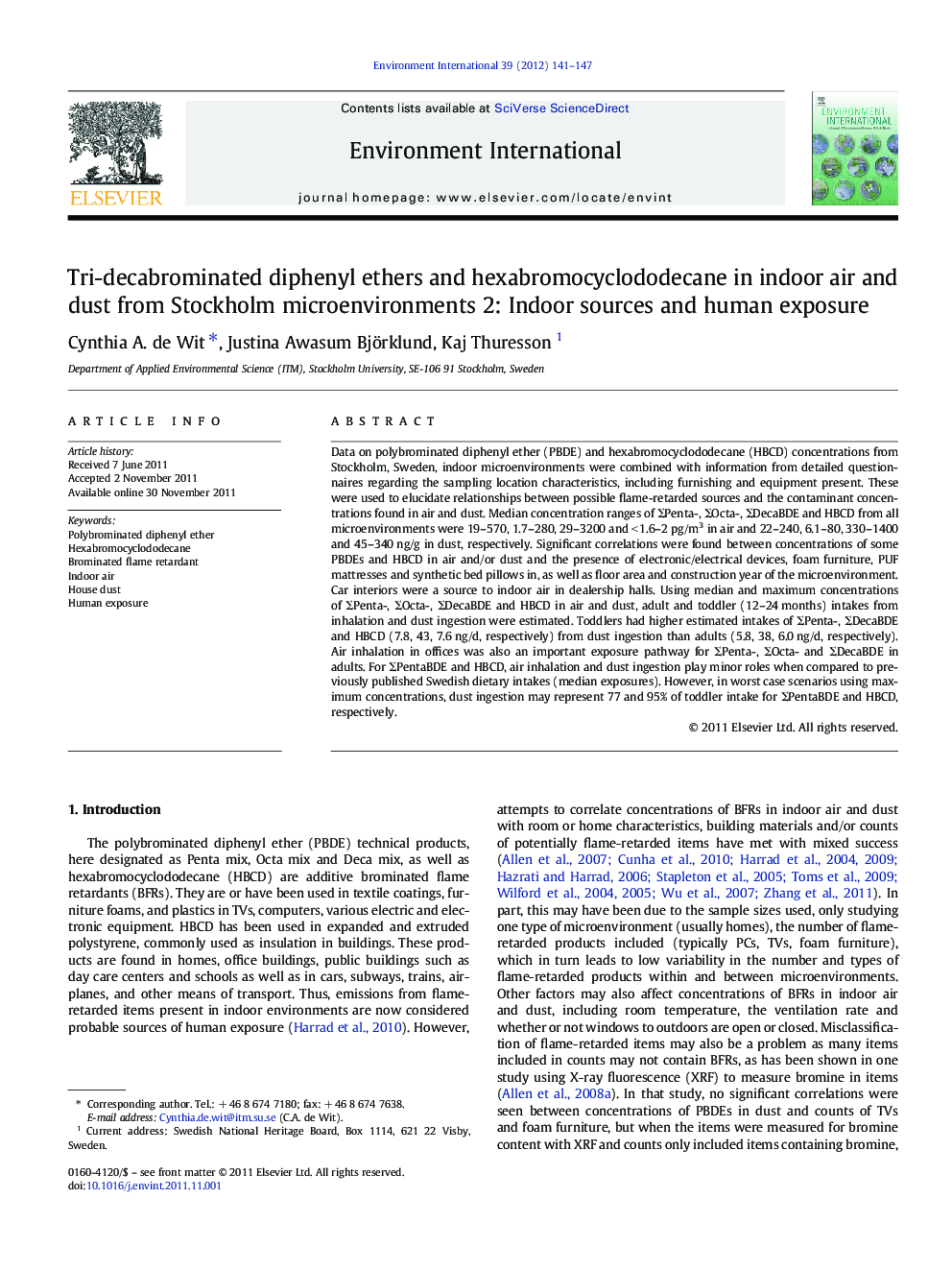| کد مقاله | کد نشریه | سال انتشار | مقاله انگلیسی | نسخه تمام متن |
|---|---|---|---|---|
| 4423145 | 1308811 | 2012 | 7 صفحه PDF | دانلود رایگان |

Data on polybrominated diphenyl ether (PBDE) and hexabromocyclododecane (HBCD) concentrations from Stockholm, Sweden, indoor microenvironments were combined with information from detailed questionnaires regarding the sampling location characteristics, including furnishing and equipment present. These were used to elucidate relationships between possible flame-retarded sources and the contaminant concentrations found in air and dust. Median concentration ranges of ΣPenta-, ΣOcta-, ΣDecaBDE and HBCD from all microenvironments were 19–570, 1.7–280, 29–3200 and < 1.6–2 pg/m3 in air and 22–240, 6.1–80, 330–1400 and 45–340 ng/g in dust, respectively. Significant correlations were found between concentrations of some PBDEs and HBCD in air and/or dust and the presence of electronic/electrical devices, foam furniture, PUF mattresses and synthetic bed pillows in, as well as floor area and construction year of the microenvironment. Car interiors were a source to indoor air in dealership halls. Using median and maximum concentrations of ΣPenta-, ΣOcta-, ΣDecaBDE and HBCD in air and dust, adult and toddler (12–24 months) intakes from inhalation and dust ingestion were estimated. Toddlers had higher estimated intakes of ΣPenta-, ΣDecaBDE and HBCD (7.8, 43, 7.6 ng/d, respectively) from dust ingestion than adults (5.8, 38, 6.0 ng/d, respectively). Air inhalation in offices was also an important exposure pathway for ΣPenta-, ΣOcta- and ΣDecaBDE in adults. For ΣPentaBDE and HBCD, air inhalation and dust ingestion play minor roles when compared to previously published Swedish dietary intakes (median exposures). However, in worst case scenarios using maximum concentrations, dust ingestion may represent 77 and 95% of toddler intake for ΣPentaBDE and HBCD, respectively.
► Indoor air and dust from Stockholm microenvironments contain tri-decaBDEs and HBCD.
► BFR levels were linked to electronics, foam furniture, mattresses and bed pillows.
► Dust ingestion may be important for toddler's exposure to PentaBDE and HBCD.
► Inhalation of office air is also an important exposure route for PBDEs for adults.
Journal: Environment International - Volume 39, Issue 1, February 2012, Pages 141–147